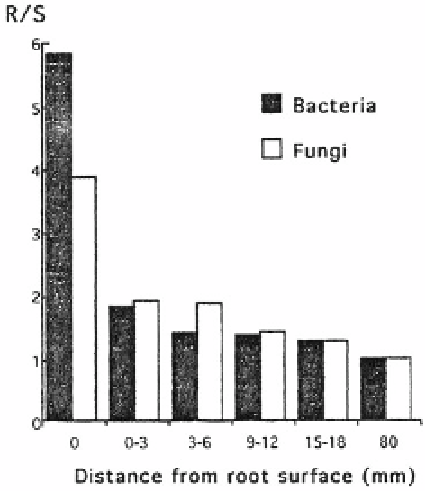Agriculture Reference
In-Depth Information
3.1.2
RHIZOSPHERE COMMUNITIES
A number of microsites in the rhizosphere are relatively dry and nutrient-poor even
though they are well supplied with energy-rich resources that are exploited by large
populations of micro-organisms and invertebrates. Furthermore, pH is significantly
influenced and roots create channels along which movement is facilitated. As a result,
microbial communities are active and numerous, and large populations of saprovores
and micropredator invertebrates exploit the root litter and microbial biomass. The ratio
R/S (abundance in the rhizosphere to non-rhizosphere soil) is often much greater than
one for a wide range of organisms but differs widely with plant species and organisms.
Microbial and faunal activities in the rhizosphere may have positive and negative
effects on plants. Beneficial processes include enhanced provision of nitrogen, phosphorus
and iron, biocontrol of diseases and deleterious organisms and stabilisation of soil
structure (Lynch, 1990).
3.1.2.1
Non-symbiotic micro-organisms and the micropredator foodweb
As roots grow, exudates and exfoliates are produced in the vicinity of the root tips
leading to substantial increases in microbial numbers and biomass in these microsites.
Values of R/S for bacteria and fungi are in the range of 2-20 but maximum values greater
than 100 have been recorded for both groups (Figure IV. 33) (Curl and Truelove, 1986).


